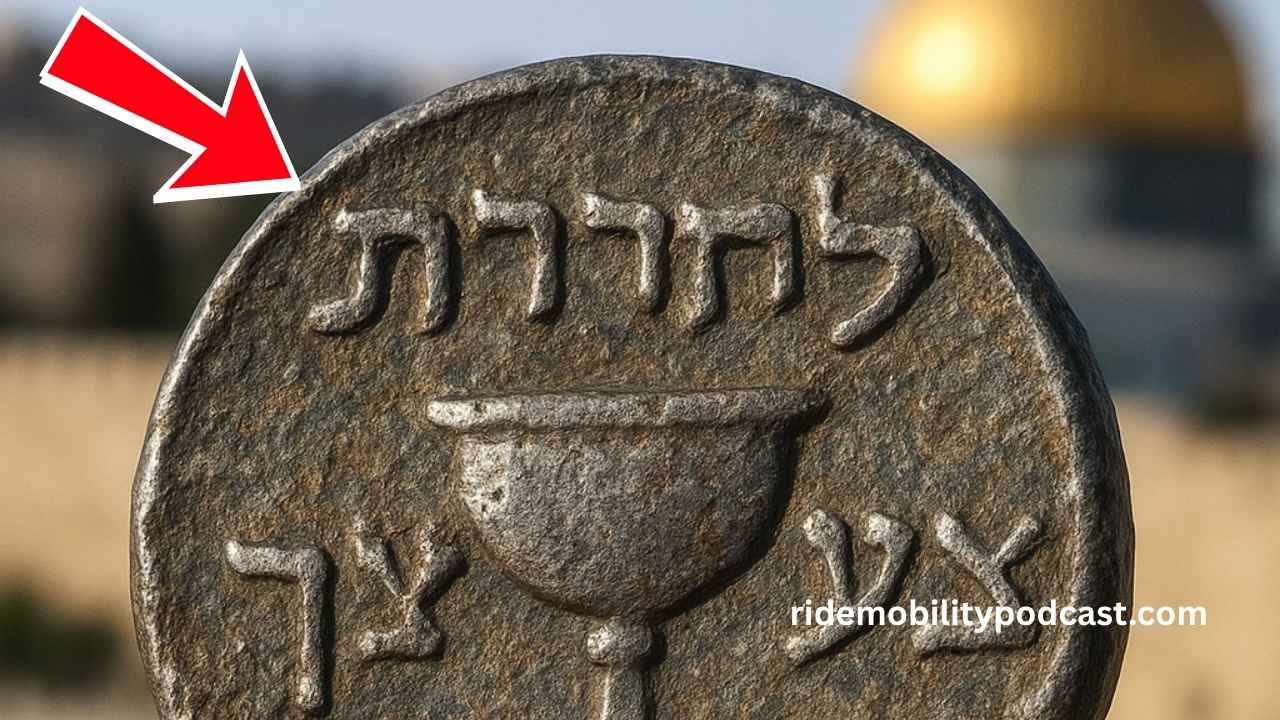Jewish Coin: A remarkable discovery has been made near Jerusalem’s Temple Mount: a 2,000-year-old bronze coin from the Jewish Revolt against the Romans. This rare coin, minted during the last days before the Second Temple’s destruction in 70 CE, carries a powerful inscription in ancient Hebrew: “For the Redemption of Zion.”
Found just before Tisha B’Av, the Jewish day of mourning for the Temple’s fall, this coin is a powerful reminder of Jewish resilience and hope during a dark chapter of history.
The bronze coin was unearthed by archaeologists from the Israel Antiquities Authority (IAA) near the Temple Mount, Judaism’s most sacred site. It was minted in 69–70 CE, the fourth and final year of the Jewish Revolt against the Roman Empire.
During this rebellion, Jews in Judea attempted to free themselves from Roman rule, but it ended tragically with the destruction of the Second Temple in Jerusalem.
This rare coin is more than just ancient currency. It’s a message from the past, capturing the emotions of a people in crisis. On one side, the coin shows a chalice with the Hebrew phrase “LeGe’ulat Zion” – translated as “For the Redemption of Zion.”
On the reverse side, it features a lulav (palm frond) and two etrogs, important symbols in the Sukkot festival. Also written is the phrase “Year Four,” dating the coin to the final year of the revolt.
What makes this coin even more unique is the shift in language. Earlier coins from the rebellion used the phrase “For the Liberation of Zion.” But by Year Four, the inscription had changed to “For the Redemption of Zion.”
According to IAA Excavation Director Yuval Baruch, this change reflects the shift in mood among the Jewish rebels. Early hope and confidence had turned into a desperate plea for spiritual salvation as the Roman siege intensified.
This transformation is deeply symbolic. It reflects how the Jewish people, surrounded and suffering, had turned from dreams of military victory to seeking divine redemption. Archaeologist Esther Rakow-Mellet described the discovery as a “moving testimony” to that devastating period.
Tisha B’Av, a Jewish day of mourning that commemorates the destruction of both the First and Second Temples in Jerusalem, is especially meaningful in light of this coin’s discovery. Found just days before this sacred observance, the coin adds emotional weight to the annual remembrance.
Rakow-Mellet said, “Two thousand years after the minting of this coin, we come along a few days before Tisha B’Av and find such a moving testimony to that great destruction.” This timing gives the discovery deeper meaning and historical context.
The coin is now on display at the Jay and Jeanie Schottenstein National Campus for the Archaeology of Israel in Jerusalem. This museum is located between the Israel Museum and the Bible Lands Museum. Visitors this summer can see the coin up close and reflect on its rich history.
| Feature | Description |
|---|---|
| Coin Material | Bronze |
| Date Minted | 69–70 CE (Year Four of the Jewish Revolt) |
| Inscription (Obverse) | “For the Redemption of Zion” |
| Inscription (Reverse) | “Year Four” |
| Symbols Depicted | Chalice, lulav, two etrogs |
| Location Found | Near Temple Mount, Jerusalem |
| Display Location | Schottenstein National Campus for Archaeology, Israel |
| Language on Coin | Ancient Hebrew |
| Associated Holiday | Tisha B’Av, Sukkot |
| Historical Context | Jewish Revolt against Romans |
This rare bronze coin is a powerful reminder of Jewish resilience, culture, and history. Discovered near the Temple Mount just days before Tisha B’Av, it bridges the past with the present.
With its ancient Hebrew inscription and religious symbolism, the coin tells the story of a people fighting for identity and hope under siege. Now displayed in Jerusalem, it invites reflection and honors the memory of a pivotal moment in Jewish history.
What is the significance of the inscription “For the Redemption of Zion”?
The inscription reflects a shift in mood among Jewish rebels from hope for military liberation to a plea for spiritual redemption as the Romans closed in.
When was the coin discovered and where?
The coin was found in July 2025 near the southwest corner of the Temple Mount in Jerusalem during an archaeological excavation.
What symbols are on the coin?
The coin features a chalice with an ancient Hebrew inscription on one side and a lulav and two etrogs (symbols from the Sukkot holiday) on the reverse.

